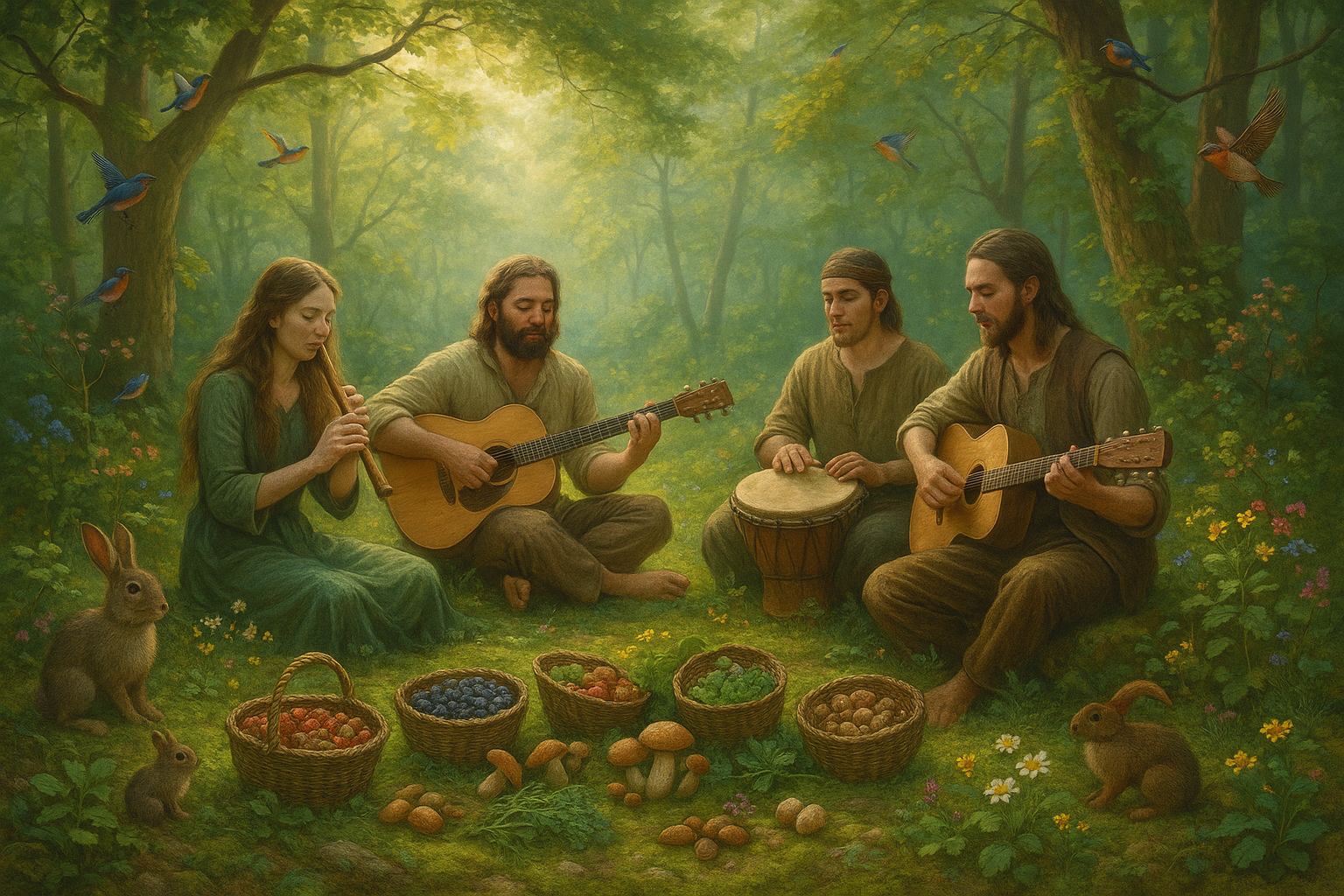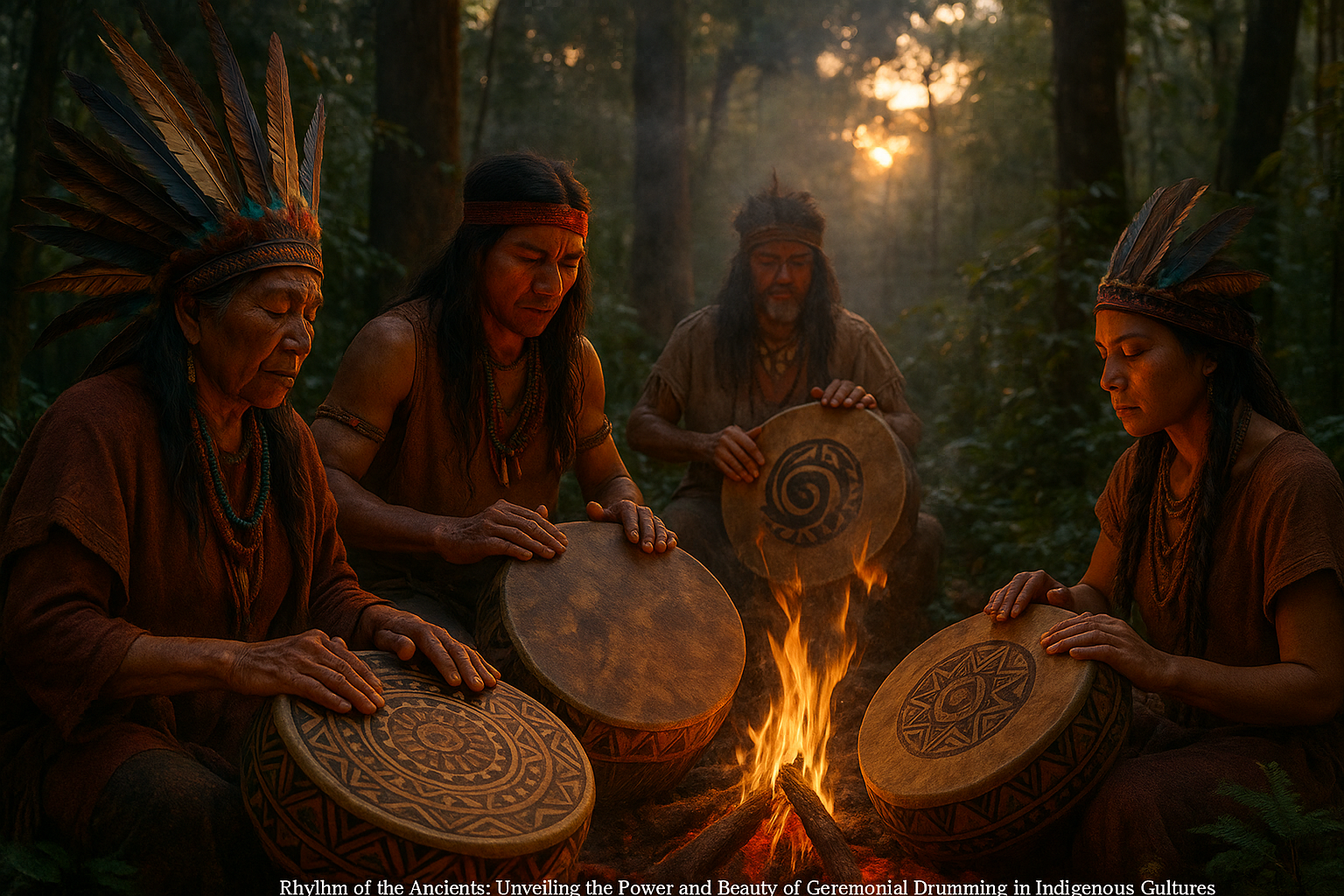In the midst of the bustling human activity that characterizes our cities, a symphony unfolds—an intricate composition woven not from car horns and bustling crowds, but from the myriad calls, songs, and whispers of urban wildlife. Welcome to the enchanting world of “Wild Beats of the Concrete Jungle: Unveiling the Urban Wildlife Sound Tales.” In this exploration, we delve into the hidden acoustic landscapes of urban environments, where nature’s resilient creatures carve out their existence amidst steel, concrete, and glass. 🦉🌆
Urban areas are typically perceived as landscapes of human dominance, places where nature has been largely subdued. Yet, these vibrant metropolises are alive with a different kind of energy—a wild, untamed spirit that echoes through the streets in unexpected ways. From the haunting hoots of an owl perched atop a skyscraper to the persistent chirping of sparrows flitting between apartment balconies, the sounds of urban wildlife are a testament to the adaptability and tenacity of these species. This article invites you to open your ears to these untold soundscapes and discover the stories of survival and adaptation that they reveal.
As we journey through this narrative, we will uncover the surprising ways in which urban wildlife has adapted its communication strategies to thrive amidst the cacophony of city life. How do birds alter their songs to rise above the din of traffic? What secrets lie in the nocturnal serenades of bats navigating between neon lights? We will delve into scientific studies that shed light on these phenomena and explore the impact of urban noise pollution on the communication and behavior of wildlife. 📚🔍
Additionally, we’ll examine the human dimension of this acoustic ecosystem. How do these sounds influence our own experience of city life? Can the presence of natural soundscapes amidst urban noise offer psychological and emotional benefits to city dwellers? By tuning into the wild beats of the concrete jungle, we not only gain a deeper appreciation for the resilience of urban wildlife but also enrich our understanding of the cities we inhabit. Join us as we embark on this sonic adventure, peeling back the layers of the urban soundscape to reveal a world that is as rich and varied as any found in the most remote wilderness. 🎶🌳
The Hidden Symphony of Urban Wildlife
In the heart of bustling cities, where skyscrapers pierce the sky and traffic never sleeps, there exists a lesser-known realm that plays host to a captivating array of sounds. This is the world of urban wildlife, a space where nature meets civilization in a symbiotic dance of survival and adaptation. The concrete jungle, often perceived as devoid of life beyond humans, is in fact teeming with an array of creatures, each contributing its unique voice to the urban soundscape. This article aims to peel back the layers of this often overlooked world, unveiling the stories told by the wild beats of the city.
Urban environments are dynamic, ever-changing landscapes that offer unique challenges and opportunities for wildlife. Animals that thrive in these settings have developed remarkable adaptations to coexist with humans. Birds, for instance, have modified their calls to cut through the ambient noise of city life, ensuring that their messages are heard despite the constant hum of traffic. Similarly, nocturnal mammals have altered their activity patterns, venturing out during quieter times to avoid human disturbances. Such adaptations speak volumes about the resilience and ingenuity of urban wildlife.
Let’s dive deeper into these stories and explore the hidden symphony of urban wildlife. From the melodious chirping of birds at dawn to the subtle rustle of leaves as nocturnal creatures emerge, each sound tells a tale of survival and adaptation. As you read, take a moment to reflect on the sounds that surround you in your own urban environment. Perhaps you’ll begin to hear the hidden stories that play out every day, just beneath the surface of city life.
The Birds: Masters of Adaptation
Birds are perhaps the most conspicuous and audible members of urban wildlife communities. Their songs and calls are often the first sounds heard at dawn and can be a source of solace in the cacophony of city life. However, life in the city is not without its challenges for these avian singers. Urban environments are noisy places, and the constant din of traffic and human activity can drown out their songs. In response, many bird species have developed fascinating adaptations to ensure their calls are heard.
One such adaptation is the alteration of song frequency. Birds in urban areas have been observed singing at higher pitches compared to their rural counterparts. This shift allows their songs to cut through low-frequency noise pollution, such as that produced by engines and machinery. Moreover, some birds have been found to increase the volume of their calls, essentially shouting over the noise to ensure their messages reach potential mates and rivals. These adaptations are a testament to the resilience and resourcefulness of urban birds.
| Species | Adaptation | Effect on Sound |
|---|---|---|
| Pigeons | Urban nesting | Increased cooing volume |
| Sparrows | Higher song frequency | Overcome low-frequency noise |
| Mockingbirds | Mimicry of human sounds | Varied song patterns |
Mammals: Silent Wanderers of the Night
While birds dominate the daylight hours with their songs, a different group of urban wildlife takes center stage once the sun sets. Mammals, often more elusive and secretive, emerge under the cover of darkness to carry out their nightly activities. From raccoons rummaging through trash to foxes hunting for prey, these animals have adapted to the unique challenges of urban life in their own ways.
The urban environment poses numerous obstacles for mammals, from the threat of traffic to the scarcity of natural habitats. Yet, many species have demonstrated remarkable flexibility in their behavior and habits. Raccoons, for example, have become adept at navigating the urban landscape, using their dexterous paws to open containers and access food. Similarly, urban foxes have been observed altering their hunting techniques to take advantage of the resources available in city settings.
These adaptations are not just physical but also behavioral. Nocturnal activity is a common trait among urban mammals, allowing them to avoid the bustling activity of daytime and reduce the risk of encounters with humans. This shift in activity patterns has given rise to a different soundscape at night, characterized by the subtle rustling of leaves, the scurrying of small feet, and the occasional call of a nocturnal predator. For those willing to listen, the night offers a rich tapestry of sounds that tells the story of survival in the urban jungle.
The Role of Insects in Urban Soundscapes
Insects may be small, but their impact on urban soundscapes is significant. As temperatures rise with the setting sun, the air becomes filled with the buzz and hum of insects going about their nightly routines. Cicadas, crickets, and katydids are some of the most prominent contributors to the nocturnal symphony, each species adding its distinct rhythm to the mix.
Cicadas, known for their loud, pulsating calls, are often associated with hot summer nights. Their calls can reach up to 100 decibels, rivaling the noise levels of a passing motorcycle. This impressive volume serves to attract mates and deter potential predators, showcasing the insects’ remarkable adaptation to urban environments. Crickets and katydids, on the other hand, produce a more subtle background chorus, their calls less piercing but no less important in the overall soundscape.
Insects also play a crucial ecological role in urban environments, serving as pollinators, decomposers, and a food source for other wildlife. Their presence and activity can indicate the health and diversity of urban ecosystems. Listening to their calls not only enhances our understanding of urban soundscapes but also provides valuable insights into the ecological dynamics at play within cities.
The Impact of Human Activity on Urban Wildlife Sounds
The relationship between humans and urban wildlife is complex, marked by both conflict and coexistence. As cities expand and human populations grow, the impact of human activity on urban wildlife and their soundscapes becomes increasingly pronounced. Noise pollution, habitat destruction, and climate change are just a few of the challenges facing urban wildlife today.
Noise pollution is a pervasive issue in urban environments, affecting both wildlife and human residents. The constant hum of traffic, construction, and industrial activities creates a sound barrier that can interfere with animal communication. Birds, for example, may struggle to hear each other’s calls over the din, leading to decreased reproductive success and altered social dynamics. Similarly, nocturnal mammals may find it difficult to detect the sounds of approaching predators or prey, impacting their survival strategies.
Despite these challenges, some species have found ways to adapt. As previously mentioned, birds have altered their songs to overcome noise pollution, while mammals have shifted their activity patterns to avoid human disturbances. However, these adaptations are not without costs. The increased energy expenditure required to modify behaviors and calls can impact the health and longevity of urban wildlife. As cities continue to grow, finding ways to mitigate the impact of human activity on urban wildlife will be crucial in preserving the rich tapestry of sounds that characterize our urban environments.
- Consider supporting local conservation efforts.
- Participate in citizen science projects to monitor urban wildlife.
- Advocate for policies that reduce noise pollution.
For a deeper dive into the fascinating world of urban wildlife sounds, consider watching this engaging video: “The Secret Sounds of City Wildlife” by Urban Wildlife Channel. It offers a visual and auditory exploration of how animals have adapted to city life.

Conclusion
The exploration of urban wildlife sounds, as unveiled in “Wild Beats of the Concrete Jungle: Unveiling the Urban Wildlife Sound Tales,” presents an intriguing and often overlooked dimension of city life. Throughout this article, we have journeyed through the cacophony of the urban soundscape, discovering the vibrant and resilient creatures that inhabit our cities. From the harmonious dawn chorus of urban birds to the stealthy rustle of nocturnal mammals, these sounds are not just background noise but integral components of our environment, symbolizing the adaptation and survival of wildlife in urban settings.
The first major point we explored is the surprising diversity of urban wildlife. Cities, often perceived as concrete jungles, harbor an astonishing variety of species. Birds, mammals, insects, and even amphibians have adapted to the urban environment, finding niches and opportunities in places we might least expect. This biodiversity is crucial, not only for the ecological balance but also for the cultural and emotional enrichment it provides to city dwellers. The presence of wildlife can enhance our urban experience, offering moments of connection to nature that are both refreshing and necessary in our fast-paced lives.
Furthermore, the sounds of urban wildlife serve as indicators of the health of our ecosystems. As discussed, changes in these soundscapes can signify shifts in biodiversity, offering insights into how urban development, climate change, and pollution are impacting local fauna. Researchers and ecologists use these acoustic cues to monitor and assess the well-being of urban environments, highlighting the need for continued attention to conservation efforts within city limits. By tuning into these sounds, we become more attuned to the ecological narratives playing out around us, fostering a deeper understanding and appreciation of the natural world in urban settings.
Another critical aspect covered is the importance of preserving these urban soundscapes. As cities expand and human activity intensifies, the habitats of many urban species are increasingly threatened. Noise pollution, habitat fragmentation, and light pollution are among the many challenges wildlife faces in urban environments. Addressing these issues requires thoughtful urban planning and public policy that prioritize green spaces, promote biodiversity, and mitigate the impact of anthropogenic noise. The preservation of urban wildlife is not just an ecological imperative but a testament to our commitment to coexist with nature, even amidst the bustling rhythms of city life.
The article also emphasizes the role of citizen engagement in urban wildlife conservation. Encouraging community involvement in monitoring and protecting local fauna can have a significant impact. Citizen science initiatives, where residents contribute to data collection and analysis, empower individuals to take an active role in conservation efforts. This participatory approach not only raises awareness but also strengthens community bonds and fosters a shared responsibility for our urban ecosystems.
In conclusion, the sounds of urban wildlife are not mere noises but vibrant expressions of life within our cities. They remind us of the intricate web of interactions that sustain urban ecosystems and challenge us to rethink our relationship with the natural world. By appreciating and protecting these soundscapes, we enhance our quality of life, promote biodiversity, and create cities that are not just human-centric but inclusive of all living beings.
As you reflect on the insights shared in this article, consider how you might engage with the urban wildlife around you. Whether it’s participating in local conservation efforts, advocating for greener urban policies, or simply taking a moment to listen and appreciate the natural sounds in your city, your actions can contribute to a more harmonious coexistence with nature. We invite you to share your thoughts, experiences, and ideas in the comments section below. Let us continue this conversation, spreading awareness and inspiring action. Together, we can ensure that the wild beats of our concrete jungles continue to resonate for generations to come. 🌿🌆
For further reading on the topic and to get involved in urban wildlife conservation, explore these resources:
1. Urban Wildlife Institute
3. National Wildlife Federation’s Urban Wildlife Program
These active links provide valuable information and opportunities to deepen your understanding and participation in urban wildlife conservation. Let us take the lessons from our concrete jungles and turn them into actions that pave the way for a sustainable and biodiverse future. 🌍
Toni Santos is a sensory storyteller and soundscape artisan whose work explores the forgotten language of the Earth through acoustic ecology storytelling. With a deep reverence for the natural world’s sonic textures, Toni crafts narratives that awaken our ears to the subtle music of forests, winds, waters, and wild silence.
His creative journey is rooted in a desire to preserve and interpret the acoustic heritage of environments, both ancient and fragile. From the echo of birdsong in a disappearing jungle to the resonance of stones in sacred landscapes, Toni’s stories reflect the memory held in sound—often overlooked, yet deeply felt.
With a background in environmental aesthetics and sonic design, Toni blends field recordings, visual symbolism, and poetic insight to create immersive experiences that honor the sonic soul of nature. His work does more than document; it invites listeners to re-tune themselves to the rhythms of life that still pulse beneath modern noise.
As the voice behind Vizovex, Toni shares sound-based studies, ambient narratives, and reflective content that help others reconnect with how sound shapes memory, meaning, and place.
His work is a tribute to:
The lost soundscapes of vanishing ecosystems
The role of natural acoustics in cultural and emotional memory
The healing potential of listening deeply to the world
Whether you’re an artist, an ecologist, or someone drawn to the quiet power of listening, Toni invites you into a space where every rustle, ripple, and resonance becomes a story—one note, one place, one heartbeat at a time.





